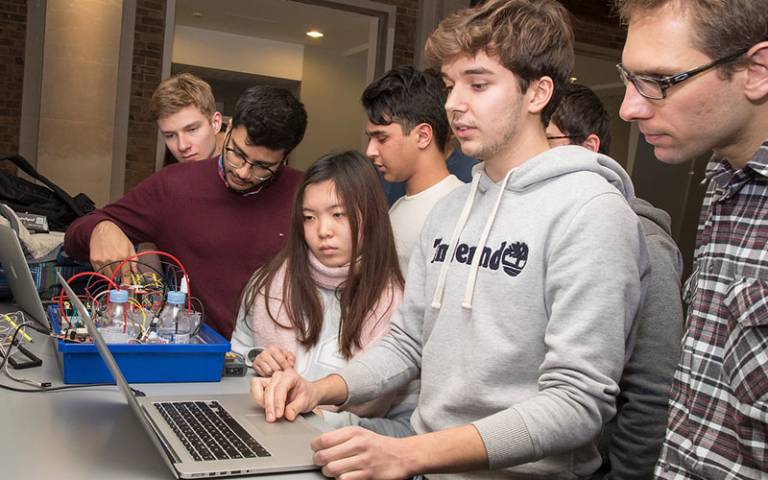Student Peer Evaluation: developing workplace and team-working skills
Initially developed to address the ‘passenger problem’ in group work, the mechanism has been developed into a broader student-centred assessment

28 November 2017
Jane Britton, Principal Teaching Fellow in UCL School of Management, explains the principles and practice behind the approach.
Why was the student peer evaluation process initially introduced?
Effective team-working is an essential component in the management and delivery of successful projects. The assessed coursework on our Project Management module requires students to experience the project team working environment through the production of an industry-standard group project plan.
The student peer evaluation process was introduced in 2002-03 academic year as a mechanism to address the passenger problem in group work - also known as the “free rider” problem, in which one or group members rely on the contribution of others and don’t put in an effort themselves, but has subsequently been developed into a broader student-centred assessment.
How does the process relate to the Connected Curriculum?
Student peer evaluation enables us to fairly assess team working, which is the fourth dimension of the Connected Curriculum. This element of the Connected Curriculum provides students with an opportunity to undertake a project in teams, but it also allows them to reflect and critically evaluate their own and other’s contributions in a constructive way. The task simulates the practices expected of a workplace project team and facilitates the development of transferable professional skills.
Dimension four of the Connected Curriculum: Students connect academic learning with workplace learning
Programmes give students the chance to connect academic learning with wider learning and skills; for example, teamwork, project management, creativity, enterprise and leadership. Students become increasingly aware that they are developing a rich range of understandings, skills, values and attributes to take into their professional lives, and are able to articulate these.
What form did it take at the start?
The process was originally a numerical – only evaluation. Students were required to complete a form (see below), scoring each of their colleagues based on their performance in the team.
The algorithm, developed by Matt Whyndham (Space and Climate Physics), introduced a voting system with features that discouraged uniform voting within the groups.
The peer evaluation forms were confidential between the student and course lecturers, to encourage frank evaluations. Students were only given the final overall score awarded by their colleagues.
Although this helped to address the passenger problem, numerical scores with no qualification did cause some disquiet and friction between team members.
How has it developed?
In order to encourage students to reflect on the team process and develop skills in giving constructive feedback to others, the process has been refined.
The form still retains numerical votes, the scores provided have to be justified through narrative commentary and grading (A-F) against specific criteria.
The narrative feedback alleviates the disquiet and friction that sometimes arose between team members when they were awarded numerical scores with no qualification. One evaluation criterion is left to students to specify.
The forms are collected for review, and the numeric part is entered into a spreadsheet that calculates a score for each participant. A tutor or marker then reviews the submitted forms as well as the data, and writes a narrative feedback towards each group, and also to each individual. One or two sentences are written for each of these.
Students then receive narrative feedback on their own performance (based on qualitative comments on sheets) plus an overall impression of how the team worked together. The individual numerical score is less transparent and is added to the overall group score before being provided to the student. The provision of narrative feedback together with a combined result has not provoked the disquiet and friction caused by numerical scores alone.
How does the process relate to learning outcomes?
Narrative feedback relates directly to a course learning outcome: “Identify their own motivations, strengths and weaknesses as members of a project team.”
It also assists students in developing the important workplace skill of providing constructive feedback to others.
Has the ‘passenger problem’ been solved?
The passenger problem isn’t completely eradicated by the use of peer evaluation. However, it does give students in the affected team some control over redressing the balance of marks within the team, albeit only over a relatively small number of available marks.
Some students clearly put more time and effort into completing the forms than others, and this hasn’t historically been rewarded.
Since 2015-16 this has been addressed through a small number of marks available to academics to award to students for the quality of the form (and feedback) that they submitted for their peers.
Students continue to be given briefing instructions on how to give feedback, as well as examples of best and worst practice in terms of how to complete the forms.
Our experience has been that, although students are initially a little reluctant to embrace the concept of grading their peers, once the group project gets underway they begin to appreciate its merits.
 Close
Close

